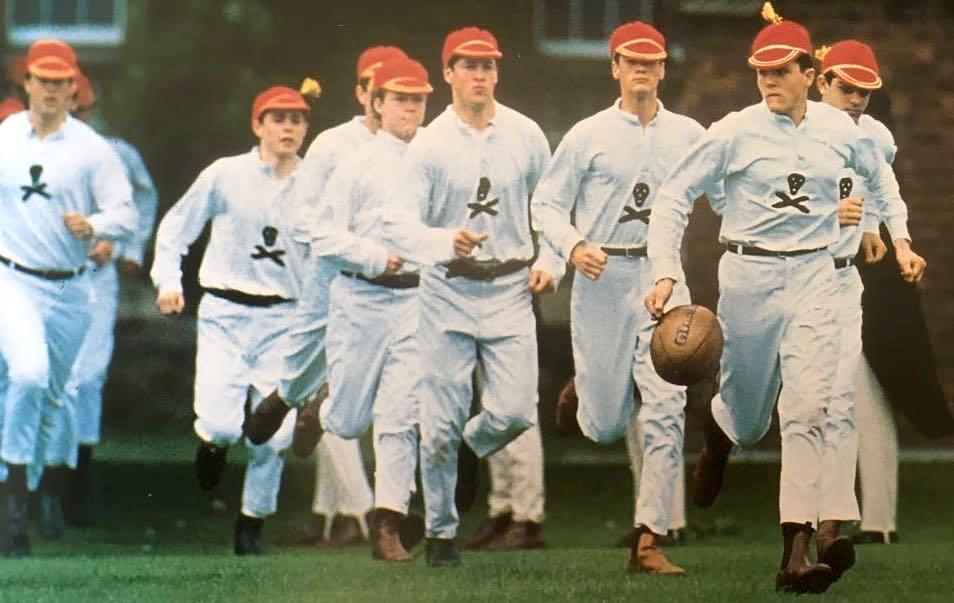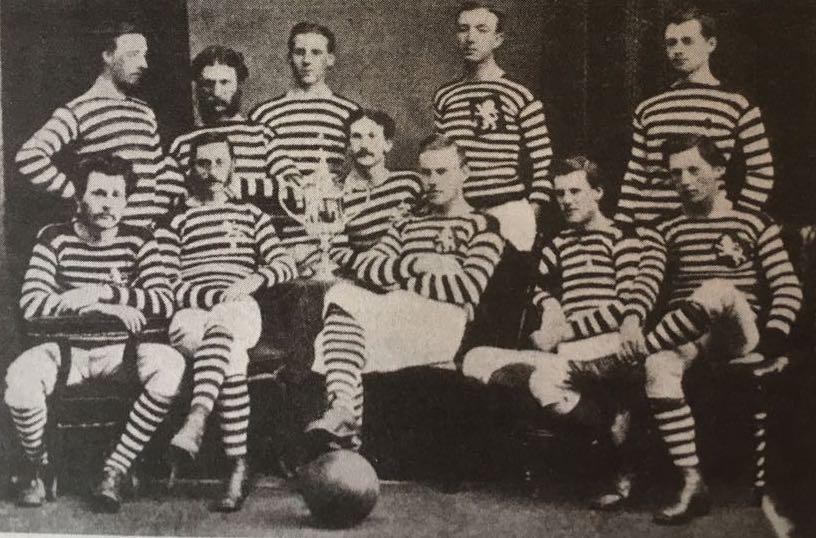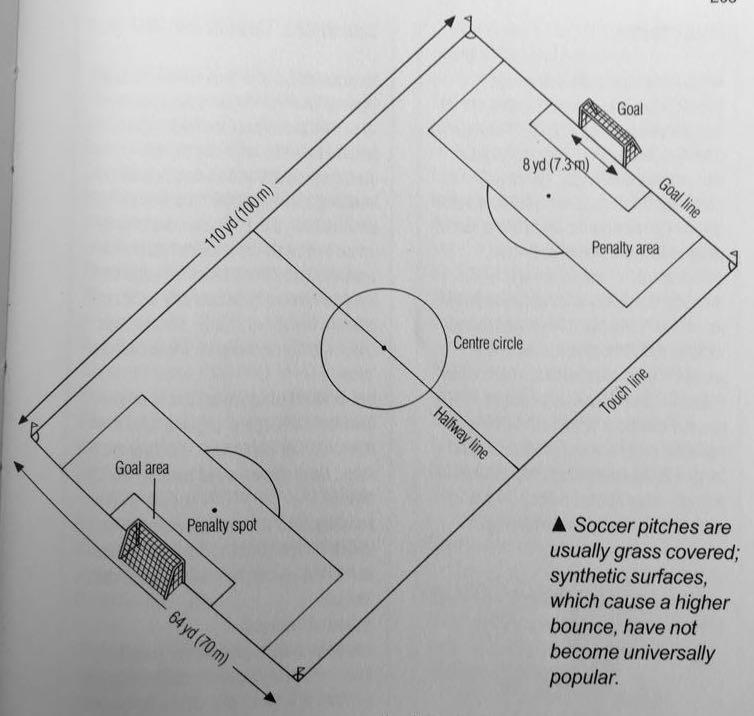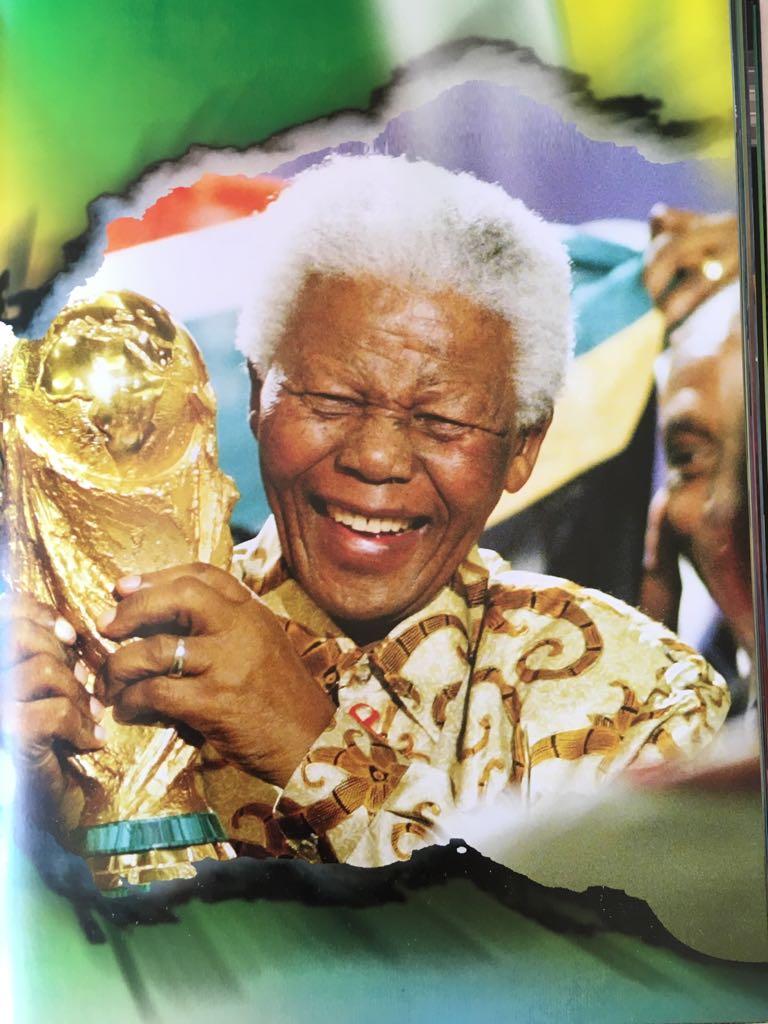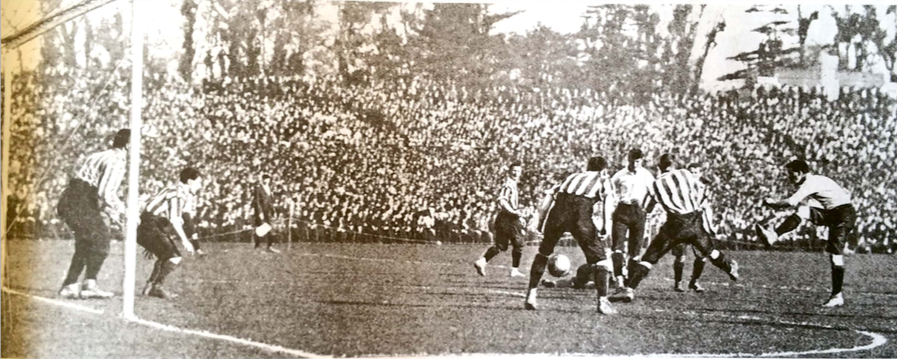
Disclaimer: Any views expressed by individuals and organisations are their own and do not in any way represent the views of The Heritage Portal. If you find any mistakes or historical inaccuracies, please contact the editor.
The reason I say this is that the game of football means different things to different people. If I were an Australian, football (or footy) would mean Aussie Rules, to a New Zealander football would be Rugby football and to an American, football is a contact sport where the ball is handled rather than kicked more akin to rugby. Europeans, Africans, Asians and South Americans know football as a predominantly kicking game with the passing of the ball by use of the foot between players: i.e. football played to the rules of Association Football (a.k.a. Soccer).
Association Football is without a doubt, the world’s most popular team game, as it has spread across the globe from its original small beginnings in the Public Schools of Victorian England (Public is a misnomer as they were private fee paying schools for the sons of the gentry). The famous schools, Charterhouse, Eton, Harrow, Marlborough, Rugby, Shrewsbury, Westminster and Winchester each played their own form of football which was entirely controlled by their pupils (masters were not involved) and when they went up to the Universities of Oxford and Cambridge they wished to continue playing football, but to whose rules? The schoolboys of Rugby school, in 1846, were the first to lay down a written set of rules for their particular version of football, the others would soon follow suit and as there were no inter-school matches at the time it mattered little that each school had its own set of rules.
As time went by this state of affairs could no longer be tolerated and senior players, who had formed clubs, were crying out for a common set of rules; and so it was that a meeting was convened on 26th October 1863, at the Freemasons’ Tavern in Great Queen Street in London’s Covent Garden. Those present were fourteen spokesmen for only a small number of London Clubs, hardly representative of the nation as a whole, but they had destiny on their side; their first action was to form the Football Association (FA), “with the object of establishing a definite set of rules for the regulation of the game”. It was agreed at the meeting to hold further negotiations which would culminate in the publication of the FA’s “Laws” on the 8th December 1863, a date which is now accepted as the beginning of the modern game. Running with the ball in hand and the hacking of opponent’s shins were eschewed, but a “fair catch” to claim a free kick was allowed and the number of players per side was to be limited to eleven. Mr F.W. Campbell, the representative for Blackheath FC wished to retain running with the ball in hand and hacking as part of the game and realising he was in the minority he withdrew his club from the FA; little did he know that in so doing it would split football into two rival codes; Association Football and Rugby Football.
Boys at Rugby School take part in the opening of the 1991 Rugby World Cup (The Union Game)
Great Britain invented the modern world, which is no idle boast, as the Industrial Revolution started right there in the mid to latter part of the 18th century and by the mid 19th century the country had become the “Workshop of the World”. The Industrial Revolution would change the way people lived and worked, no longer would they be tied to the land with their lives ordained by the seasons, in essence there was also a social revolution as Britain’s population became urbanised, with the steady migration of country folk to the manufacturing towns of the North and the Midlands of England and the Lowlands of Scotland.
For the many that flocked to the towns their lives were made wretched by poor living conditions and long working hours in factories and mills with only the Sabbath as a day of rest (Charles Dickens in his novels recorded the plight of the poor). Recreation for them was not an option as working to make ends meet was their constant struggle. Thus the lot of the working class was not conducive for playing organised sport in the first half of the 19th century and it was left to the middle and upper classes to pursue team games.
Old photo of Queens Park Football Club from Glasgow (Can we have our balls back)
As the 19th century progressed towards the “Fin de Siecle” (turn of the century) the working class was clamouring for social justice and their plight was being mitigated slowly but surely. Victorian society was riven with issues of Class, but also a spirit to help those less fortunate and several “Good Samaritans” came to the fore with the aim to uplift the poor both spiritually and materially. Men who had entered the clergy, and had an “Old school tie” valued the idea of “Muscular Christianity” (which had imbued their own upbringing) and saw fit to save souls with a Bible in one hand and a football in the other; on Saturday afternoons they would start football clubs; noting that Sunday was a day of rest and for praising God. A case in point was the football team started by the Villa Cross Wesleyan Chapel in Birmingham which became Aston Villa in 1874.
Enlightened employers encouraged their workers to form football teams that would be able to compete against other sides, at first as friendly matches and then in a league and by so doing foster pride for a company. One team in particular was created in 1878 for railwaymen working for the Carriage and Wagon Works of the Lancashire and Yorkshire Railway and was called the Newton Heath LYR Football Club, which later changed its name to become Manchester United!
There is a saying that “Football is a gentlemen’s game played by ruffians and that Rugby is a ruffians’ game played by gentlemen”, the irony is that both games stem from the playing fields and quadrangles of the most elite schools of Britain and yet Association Football was taken up by working men as if it was there own creation. In fact it could be said that things had gone full circle as football returned to its roots, that of Folk Football played by mobs of villagers on Holy Days (Shrove Tuesday being the most popular) during the Middle Ages.
Diagram of a standard soccer pitch (Fact File)
Association Football became well established in British society especially amongst the working classes of England, Scotland and Northern Ireland where heavy industry was present. Rugby on the other hand would prosper amongst middle class men in the major cities and with working class men in farming communities and those living in the mining villages of Cornwall, South Wales and Northern England. The mill towns of Lancashire and Yorkshire were also rugby territory and competed with association football for spectator attendance, which would in turn cause another rift in 1895, when the Northern clubs broke away from the Rugby Football Union over the issue of “broken time” payment of players (reimbursement for loss of wages). Thus today rugby is played in two variations, Rugby Union and Rugby League.
During the second half of the nineteenth century British expatriates were to be found everywhere across the globe and wherever they went they set up clubs so that they could play the sports they had enjoyed back home, with cricket, rugby and football being the most popular. This in time would influence the local elite who would join clubs set up by the British, this being especially so in South America where British capital and expertise were building the infrastructure, most notably the railways. The first game of football to be played under FA rules in South America took place in Buenos Aires in 1867, where at the time around 40,000 Britons were living and working, is it any wonder that Argentina today has strong soccer and rugby teams.
Now here is something to think about, if you like a conundrum. Why did football became the dominant winter sport in Europe and South America, but in North America and the British Empire the oval ball was preferred to the round? The answer is not immediately apparent but a plausible explanation would be as follows: firstly in the case of Australia where by the 1850’s the city of Melbourne was thriving and had an established working class, the circumstances replicated closely those of England – the mother country. Football was being played in various guises, but in 1859 Melbourne came up with its own set of rules, thus pre-dating the FA by four years! The game was played on a cricket pitch (oval) and with an oval ball and it became popular in the states of Victoria and South Australia and would become the AFL. Conversely New South Wales and Queensland preferred to play football to the Rugby code (both Union and League) and that is why soccer was never fully espoused by Australians. Likewise the Americans, not wishing to ape the Brits, developed their own unique “Grid Iron” form of football. If William Webb Ellis is the father of Rugby then by the same token he is the grandfather of American Football as the Ivy League colleges of the North East (Harvard, Yale, et al) evolved their game from Rugby (as it was played 130 years ago).
Another question to be answered is where did the word “soccer” originate? Although it is hardly used in England today, as “football” is preferred, it was originally coined by undergraduates at Oxford and Cambridge as a slang term for “association” rather like “rugger” is used as a slang term for rugby. In colloquial speech one could say “I am going to play rugger this afternoon not soccer”.
Americans and Australians and to a lesser extent South Africans prefer to use Soccer to describe Association Football as it reserves Football for their own home grown game.
The so called “Beautiful Game” has given the English language several expressions, for instance if you wish to start something you might say “to kick off” or “to get the ball rolling”. Then again if you decide otherwise you could say “Kick it into touch”. If you have an idea which needs to be discussed and finalised you might say that you are “Kicking it around” and my favourite is when there is a scope change, someone’s “Moved the goal posts”.
The FIFA World Cup competition today vies with the summer Olympic Games as the biggest sporting event on earth, yet prior to the first World Cup, held in Uruguay in 1930, winning a gold medal at the Olympics was considered to be the highest achievement for a national football team and the winners could rightly consider themselves as “World Champions”. The first to win the World Cup in 1930 was Uruguay who beat Argentina 4 goals to 2 in the final in Montevideo. The Uruguayans were also the reigning Olympic Champions from the previous Amsterdam Games of 1928 where they had beaten the Argentineans 2 goals to 1.
Soccer was dropped from the programme of the 1932 Los Angeles Olympics due to problems arising from professionalism in the sport, as the Olympic Games were considered then to be strictly amateur. It was reinstated for the Berlin Olympics of 1936 (Hitler’s Games) where Italy won gold. The second and third World Cup competitions were staged in Italy in 1934 and France 1938 and Italy would win on both occasions. The Italians by the way call football, “calcio” (which translated is kick).
The Second World War (1939-1945) would intervene and international sport would only be resumed post-war with the XIV (14th) Olympiad taking place in London in 1948 and the fourth World Cup in Brazil in 1950. Uruguay would win their second World Cup by beating the hosts at the Maracana stadium, Rio de Janeiro, 2 goals to 1, in front of a crowd of 200 000 spectators; a draw was all that Brazil needed to lift the Jules Rimet trophy, as the tournament was not decided on a one match final but instead by way of a four team final pool, which comprised Brazil, Uruguay, Spain and Sweden. Brazilians, of all walks of life, were devastated and they would have to dwell on their defeat until 1958, when they won their first World Cup (held in Sweden), when their team (“Selecao”) beat the hosts in the final, 5 goals to 2, with the teenage Pele (Pearl) scoring twice for the “Canarinha”.
Football would gain in popularity from 1950 onwards, especially away from its traditional strongholds of Europe and South America. Africa was ripe for its introduction as it was seen to be a skilful game with simple rules and could be played on any surface as it was less of a contact sport than rugby. All that was needed was a football (preferably a size 5 that was sometimes but not always inflated) and two teams of at least three-a-side and it was game on. The minimal amount of equipment required to play football made it the game of choice in townships and villages from Cape Town to Cairo. Therefore the World Cup Finals that were held in South Africa, the first on African soil were well overdue for a continent that had fallen in love with the game sixty years before. That no African side has got any further than the quarter finals in a World Cup is disappointing, but players from Africa and of African descent are to be seen in all the major European football leagues – the English Premiership, the Spanish La Liga, the Italian Serie A and the German Bundesliga.
Whatever you do today “Keep a clean sheet” and don’t “Score an own Goal”
Nelson Mandela holding the World Cup (World Football Records 2010)
References and further reading:
- “FIFA.com”; web site of the Federation International de Football Association (FIFA)
- “FACT FILE Sport” by Peter Brooke-Ball, first published by Grisewood & Dempsey 1991.
- “Can We Have Our Balls Back Please?” by Julian Norridge, published by Penguin 2008.
- “World Football Records 2010” edited by Martin Corteel, published by Carlton Books 2009.
- “A Social History of England” by Asa Briggs, third edition published by Penguin 1985.
- “The Complete American Football Book” by Nicky Horne, published by Robson Books 1986.
Comments will load below. If for any reason none appear click here for some troubleshooting tips. If you would like to post a comment and need instructions click here.

